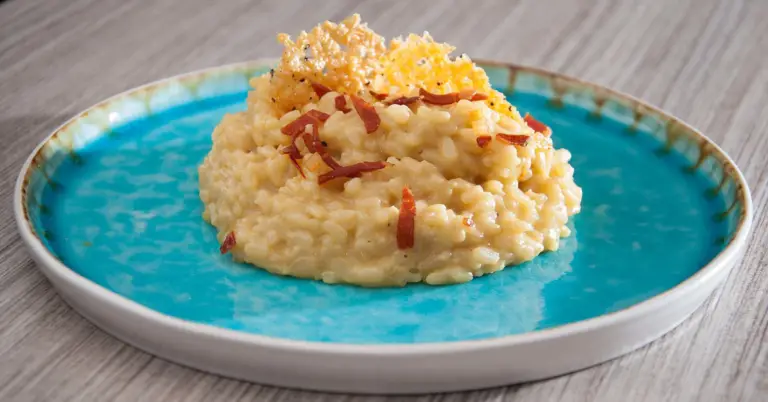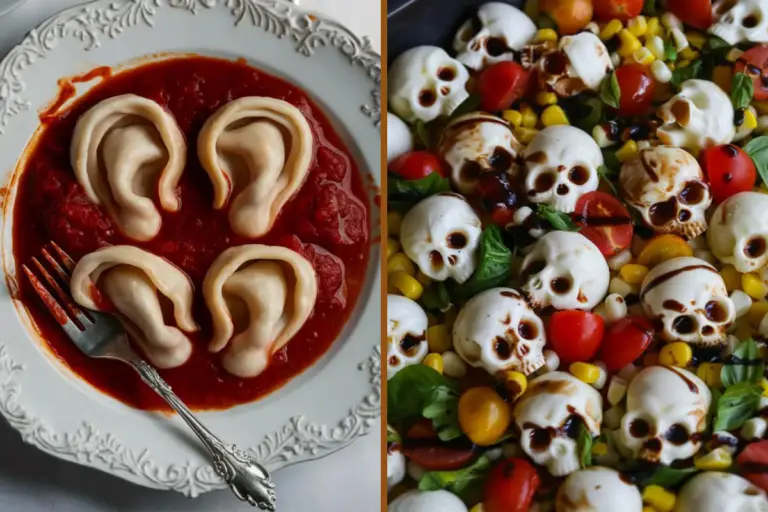Every occasion can turn into a head-scratcher for a family with a small children at the restaurant: how many kids would be ready to consume a plate of mussels in tomato sauce? And how many would find themselves starving watching their parents enjoy a tasteful plate of spaghetti alla carbonara? This is why many places abroad provide a menu for children, an option which is not available everywhere in Italy.
If you expect by default to take a seat in an Italian restaurant and to be able to please the little ones with a dedicated menu, I warn you, you may be extremely disappointed.
Unless it is a participation in a ceremony: in that case, it is a tradition to organize “designed” courses for children, taking care also of any allergies and intolerances, if reported in advance.
But why is the option for a children’s menu almost never present in Italian restaurants?
The Italian concept of kids friendly catering
I believe that everything starts from our concept of family. In many countries, organizing a big family party means “making a table for children” and separating them by age groups, with the common problem that someone always ends up offending themselves. Teenagers, who no longer feel like children but, at the same time, are not even adults, how do you think they can feel in these cases?
I have found myself in this kind of scenario but, in my own country, the “table for children” is not a custom that can be defined mainstream, instead: usually, the family unit is very cohesive, it experiences the same things and pushes sharing to the max. And this is thanks to the halved portions.
Why is there the idea of creating different menus when you can simply manage the quantities? If the courses should include dishes that are not suitable for younger guests, there is always the possibility of ordering pennette with fresh tomato or any other simple, genuine dish.
In short, no one is scandalized by a very varied order at an Italian restaurant, whether it is in terms of quantity or assortment. We are used to big tables, following everyone’s tastes, adults and children, because we believe that food is one of the essential pleasures of life!
Examples of children’s menus in Italian restaurants
As I explained previously, menus dedicated to children in Italian restaurants are very rare; in fact, some restaurants used to receiving tourists, could offer it. Here below, you will find some examples of typical courses present on an Italian children’s menu:
First courses from a children’s menu
- Wholemeal macaroni with tomato or basil pesto
- Cream and lemon tortellini
- Norma pasta
- Saffron risotto
- Vegetable soup with croutons (the kid will get very dirty, but he will enjoy like never before)
Second courses from a children’s menu
- Grilled chicken breast
- Ascoli olives
- Cod sticks
- Chicken cutlet
- Veal steak
- High-quality meat burger
- Cooked (or raw) ham with parmesan, gruyere and soft cheese
Side dishes from a children’s menu
- French fries
- Roasted potatoes with rosemary
- Mashed potatoes
- Vegetable caponata
- Assorted grilled vegetables
Desserts from a children’s menu
- Tiramisu
- Panna cotta
- Coppa del Nonno
- Fruit salad
- Strawberry and chocolate ice cream – in summer seasons
- Cake with custard
- Fruit tart
- Soft cake with chocolate or Nutella
No different tables, no different menus, no different hours
Ok, in Italy sharing restaurant tables and menus with your children is practically a tradition. But how do you reconcile the schedules?
I know that, abroad, several families organize themselves to have dinner “with adults”, leaving children at home with the nanny or planning themselves to be able to take them to bed at a certain point in the evening, maybe in adjacent places. Even in this case, in Italy it is exactly the opposite.
It may happen that you enter a club at 11 p.m. finding rooms full of more than awake kids, ready to steal something from their parents’ plate, sing karaoke or chase each other, playing while the “grown-ups” talk about boring things. It is all part of our concept of family sharing: if, for once, we find ourselves late for a special occasion, why not create memories to keep that include our children too?
Obviously, when time gets really prohibitive, it is very easy for the little ones to fall asleep like stones: at that point, the chances for ending the evening split according to the scenarios. There are those who take the opportunity to say goodbye and leave, those who improvise a “sleeping room” in some empty and remote corner of the restaurant, continuing to celebrate and those who begin to walk slowly towards the house, placing the children on the back seats of their cars, exploiting to have another chat outdoors or during the return journey.
Basically, Italians are very truthful: we tend to live everything to the fullest and to “dilate time” as much as we can, by sharing positive experiences with everyone we love.
And, if this means breaking some rule of our daily life, so be it!
Of course, for our concept of family as an indissoluble nucleus, there is also the reverse side of the coin: a son who decides to go and live alone is not perceived as an adult who wants to build his future but, above all, as a sort of mourning to be faced with an open heart, including kleenex and tears, but that is another story…







